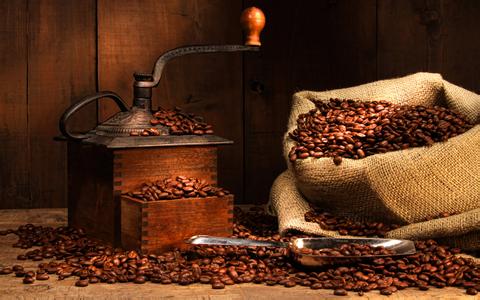The use of Italian Coffee Machine
The espresso machine is not difficult to operate, but it is not so simple to make delicious coffee.

The espresso machine produces strong coffee, but it is relatively complicated. Generally speaking, after professional training, it is possible to extract a considerable level of fragrant espresso. If you have an intentional coffee machine at home, practice it yourself ~
Espresso machines come in fully automatic and semi-automatic versions. Semi-automatic is equipped with a handle, handle points single cup handle and double cup handle. One and two Espresso. Fully automatic coffee machines have bean and powder bins on the sides or at the back. I suggest buying coffee beans. Because freshly ground beans taste better than ground coffee. Moreover, coffee powder must be sealed and stored after opening the package. In theory, the shelf life is one week.
If it is a fully automatic coffee machine, a cup of concentrate is generally 7-9 grams of powder, extracting 30 ml of Espresso coffee.
As for semi-automatic coffee machines, they are generally equipped with bean grinders, and the coffee powder thickness is inversely proportional to the extraction time, that is, the coarser the coffee powder, the shorter the extraction time. Put the coffee powder into the handle and smooth it. Theoretically, the powder is compacted with 30 pounds of force. Then install it on the coffee machine for extraction. For the next milk bubble stomata, technical essentials, variables are also many. If you want to try cappuccino, latte, mocha, etc., buy a thermometer. Because when making milk bubbles, the principle is that the coffee machine uses the pressure and temperature of the boiler to heat the water into high-pressure steam (pay attention to safety). The process of frothing milk involves pumping steam into the milk. And this process inevitably warms the milk. When the temperature of milk itself exceeds 90 degrees, almost all nutrients have disappeared. Due to temperature limitations, frothing is an important test of a barista's skills.
The first time when making milk foam, in addition to pay attention to safety and temperature, the other can be explored in the future practice. What I want to say here is that even the worst barista still has a chance to remedy the poor quality milk foam. In the milk tank, all the large milk bubbles in the upper part are scooped out with a spoon, and the lower milk bubbles will be relatively fine. It should be noted here that the scooped milk foam, that is, the milk foam that has not been utilized, after cooling, do not carry out the operation of foaming milk again. It is also a question of nutritional value.
If the lack of steam during frothing is just a water problem, there are two possibilities. First, semi-automatic coffee machines have hot water ports and steam sticks. That is, one for hot water and one for milk foam. The hot water port is generally used by the barista to warm the cup when making coffee. That is, when preparing, first fill the coffee cup with hot water. Let's see if it's in the wrong place. Secondly, some coffee machines have automatic cleaning devices, and there will be a washing process after coffee is finished. See if the coffee machine is washing. If it wasn't in the wrong place, and it wasn't because of a cleaning problem. I think it's the boiler. Coffee machines usually take some time to prepare after starting.
It is best to use Nestle milk for foaming milk, not skim milk. The best temperature control before playing at 5 degrees (refrigerator freezer can be) that is to say, in the milk is not frozen under the premise of the cooler the better. The process of milking should not exceed 20 seconds, and the optimal temperature of the milk cannon should be 66-71 degrees. It is important to insert the steam tube into the lower part of the milk tank for the first five seconds, and then move the milk tank down slowly according to the foam formation effect. This requires experience and skill.
Important Notice :
前街咖啡 FrontStreet Coffee has moved to new addredd:
FrontStreet Coffee Address: 315,Donghua East Road,GuangZhou
Tel:020 38364473
- Prev

World famous coffee making Fancy coffee types Recommended
1. Mocha Coffee Mocha coffee shows a strong New York flavor in a small cup. Preparation: Add chocolate syrup 20 ml and very strong deep fried coffee in a cup, stir well, add 1 tablespoon cream to float on top, peel some chocolate powder for garnish, and add cinnamon stick. Mocha mint coffee Mocha mint coffee: pour warm coffee cold cream on top of cold cream
- Next

The general principle of brewing coffee
A) General principles for brewing coffee ① use freshly roasted coffee beans, which can be stored for no more than a week, preferably roasted within an hour. ② stores coffee beans in containers that hide from the light. ③ freshly ground coffee beans before blending. ④ should be called to leave the tap water for a few seconds before use, and then use the fresh cold water that has just flowed out of the faucet. Boil the water, but not for too long
Related
- Beginners will see the "Coffee pull flower" guide!
- What is the difference between ice blog purified milk and ordinary milk coffee?
- Why is the Philippines the largest producer of crops in Liberia?
- For coffee extraction, should the fine powder be retained?
- How does extracted espresso fill pressed powder? How much strength does it take to press the powder?
- How to make jasmine cold extract coffee? Is the jasmine + latte good?
- Will this little toy really make the coffee taste better? How does Lily Drip affect coffee extraction?
- Will the action of slapping the filter cup also affect coffee extraction?
- What's the difference between powder-to-water ratio and powder-to-liquid ratio?
- What is the Ethiopian local species? What does it have to do with Heirloom native species?

